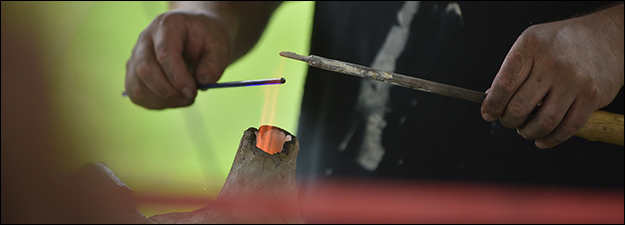Hidden and Revealed: New Research on the Art and Architecture of Parish Churches in Medieval England (1100-1600) II
Sponsoring Organization(s)
Special Session
Organizer Name
Sarah Blick
Organizer Affiliation
Kenyon College
Presider Name
Laura D. Gelfand
Presider Affiliation
Utah State Univ.
Paper Title 1
Recusants and Rescued Objects: The Saint Katherine Altarpiece of Lydiate
Presenter 1 Name
Lloyd de Beer
Presenter 1 Affiliation
British Museum
Paper Title 2
"With Angels for to Sing": East Anglian Angel Roofs, the Liturgy, and Lay Piety
Presenter 2 Name
Sarah Cassell
Presenter 2 Affiliation
Univ. of East Anglia
Paper Title 3
A Hidden Mappa Mundi in Norfolk: Trunch Parish Church Font Canopy
Presenter 3 Name
Sarah Blick
Start Date
15-5-2016 10:30 AM
Session Location
Fetzer 1040
Description
Cathedrals are gorgeous and worthy of study, but it was the often-overlooked parish church that was at the heart of almost every community in later medieval England where people worshiped, held village celebrations, paid taxes, organized poor relief, and more. Artists and their patrons sought to create works of art that would continue to intrigue parishioners who might stop by the church most every day. Sculptures were hidden in nooks to be discovered by the wandering eye, painted rood screens offered layered imagery, and parishioners looked for apertures in the ceilings and floors where (on appropriate days) doves were released, incense burners swung, and water were splashed down on congregants while images of Christ seated on a rainbow were winched upward as devil dolls were tossed down into the trap below. These sessions seek papers that focus on how the visual arts engaged the local parish and how their position and movement (of the object or of people) added to the excitement of coming back to a building they knew so well.
Hidden and Revealed: New Research on the Art and Architecture of Parish Churches in Medieval England (1100-1600) II
Fetzer 1040
Cathedrals are gorgeous and worthy of study, but it was the often-overlooked parish church that was at the heart of almost every community in later medieval England where people worshiped, held village celebrations, paid taxes, organized poor relief, and more. Artists and their patrons sought to create works of art that would continue to intrigue parishioners who might stop by the church most every day. Sculptures were hidden in nooks to be discovered by the wandering eye, painted rood screens offered layered imagery, and parishioners looked for apertures in the ceilings and floors where (on appropriate days) doves were released, incense burners swung, and water were splashed down on congregants while images of Christ seated on a rainbow were winched upward as devil dolls were tossed down into the trap below. These sessions seek papers that focus on how the visual arts engaged the local parish and how their position and movement (of the object or of people) added to the excitement of coming back to a building they knew so well.

